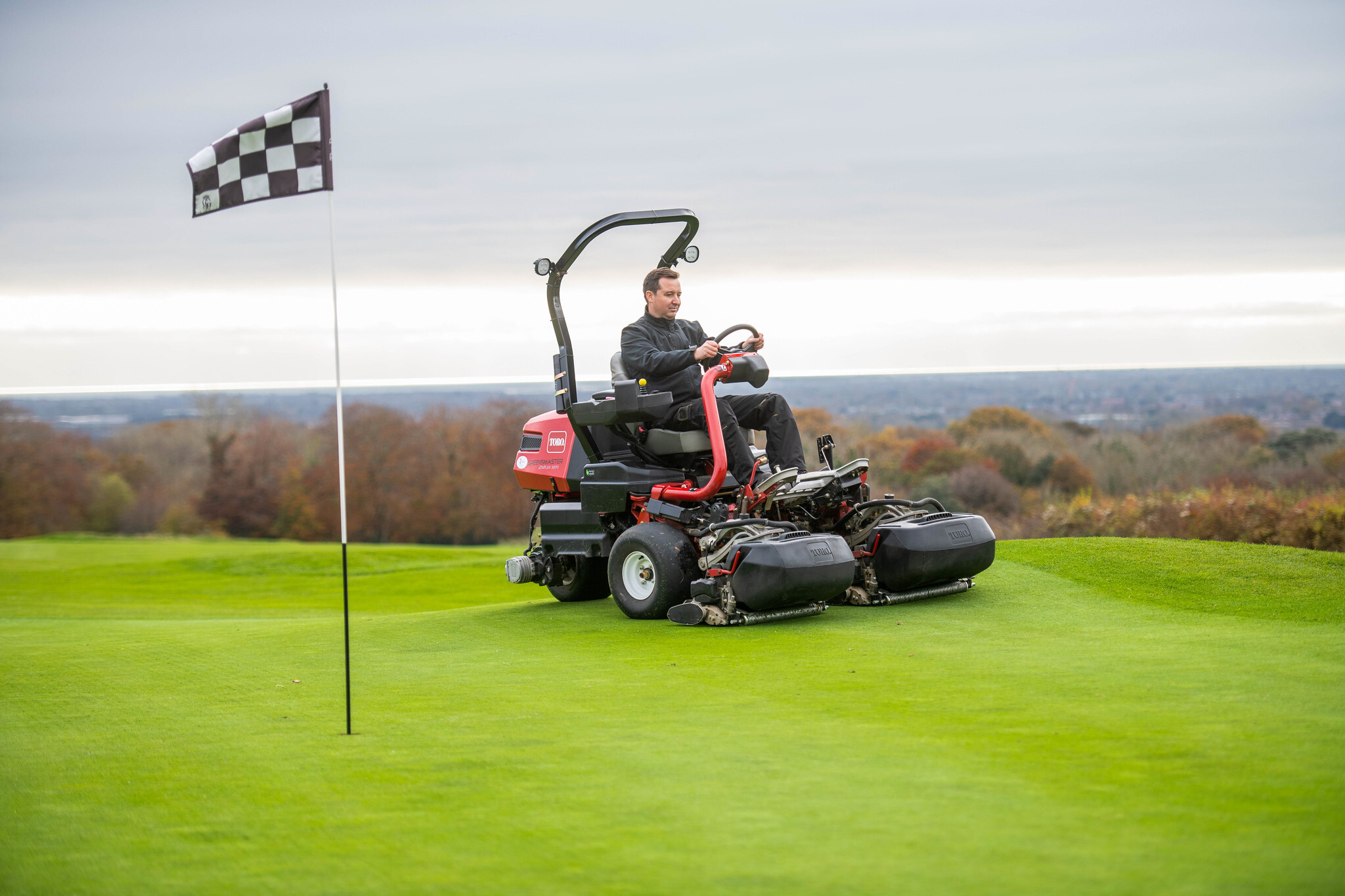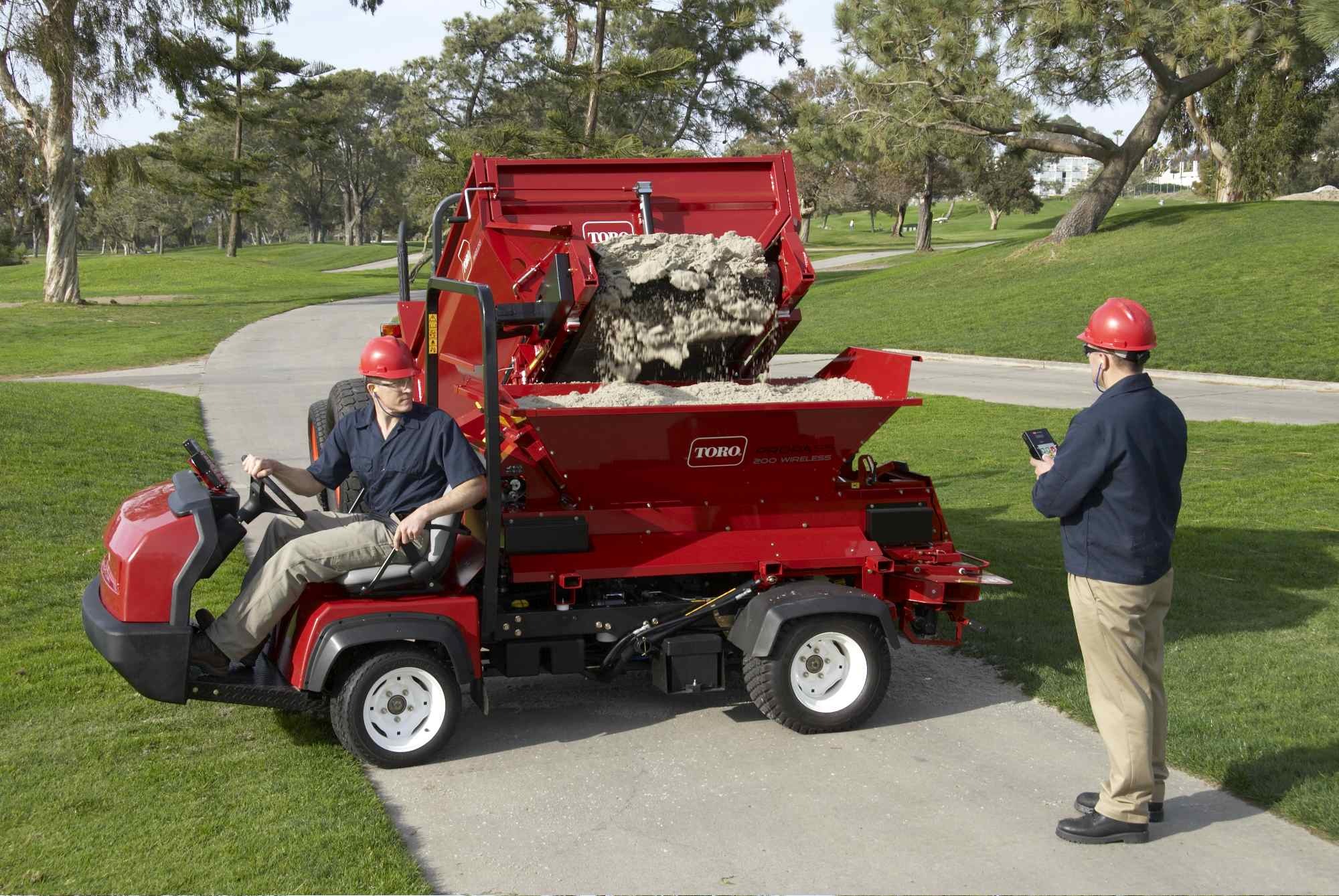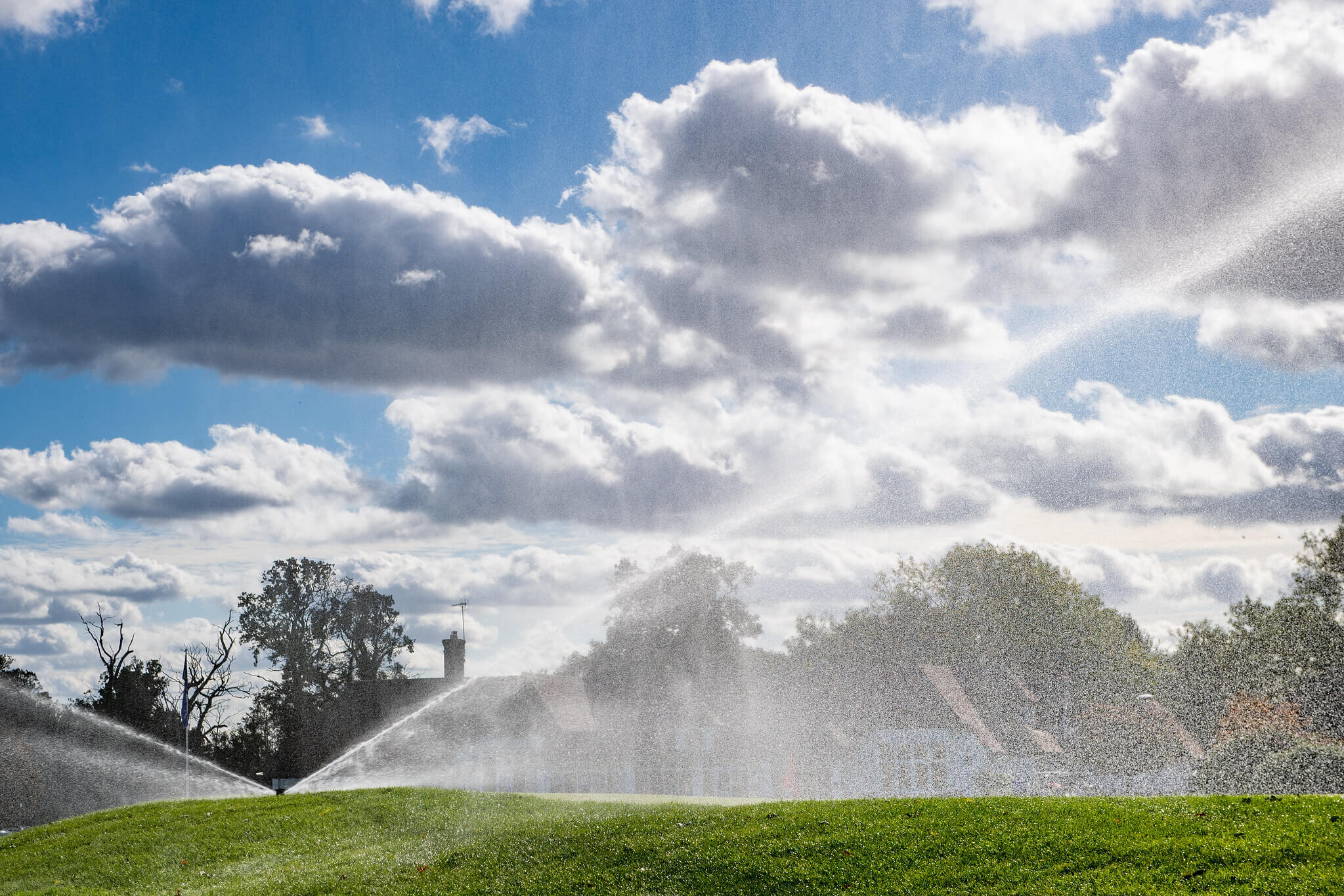Spring into maintenance
8 steps to achieving healthy turf
Spring maintenance is an essential aspect of turfcare. So much so, a large majority of clubs dedicate a whole week to it. Here, we consider what makes an effective programme of activities and what machinery is needed to prepare and refurbish playing surfaces so they’re ready for the busiest time of the year.
As the grass begins to wake up after winter and the main growing season approaches, there are multiple things that can be done to ensure a good start to the season and that desired standards are achieved.

1. Set aside a course maintenance period
Dedicating a set period to golf course maintenance is recommended because a series of different operations need to be undertaken, in sequence and in a well-timed manner.
The work a club will need to do will depend on several factors, including the state of the sward and soil profile, thatch and organic matter build up, and the resources available. Machinery, staff, water, materials, and parts, all help to determine the extent of the renovation works required and when they should take place.
For most golf courses, spring provides the perfect time frame to undergo course maintenance.
2. Prepare the turf with mowing
Preparing surfaces for renovation starts with mowing since this cleans and prepares the surface.
Grass growth in spring can be uneven and varied due to different grass species, and therefore mowing to a uniform height is ideal to create an even surface for scarification and topdressing operations. The best mowers are cylinders as long as they can collect the cuttings.
What are the best mowers for course maintenance?
For this level of fine turf cutting, Reesink has classic diesel, hybrid and electric mower options, with the Toro Greensmaster 3250-D, Greensmaster TriFlex Hybrid 3420 and the electric Greensmaster eTriFlex 3370.
All three prove that no matter the power source, a finish that exceeds expectation can be delivered.

3. Decompact surfaces with aeration
Aeration is an essential part of spring maintenance. Recognised as one of the most important tasks implemented on fine turf for decompacting and improving air and gas exchange in the soil, there are many different options depending on what you are looking to achieve.
The increase in oxygen it provides is critical for root growth and ultimately grass growth, improves the rate water moves into the soil, improves drainage, and relieves turf compaction and thatch build-up. This results in a better quality playing surface.
What type of tines should I use?
Getting oxygen into the soil can be a disruptive process, so it’s important to correctly identify what you want to achieve and select the best protocol to achieve this.
-
Hollow tining is one of the ways of controlling organic matter and an effective way of soil exchange when used alongside topdressing.
-
Solid tining both shallow and deep provides enhanced gas movement between the root zone and the atmosphere. Shallow (less than 150mm) is useful for aerating the upper level of the root zone and particularly good for sandy soil that doesn’t need much turf compaction relief.
-
Deep tine is useful for decompacting the profile after the long winter and helping to promote drainage.
What are the best aeration machines for the job?
When it comes to choosing the right machinery for the job, there are several innovative and efficient options from Toro.

Choose Toro ProCore 648s for efficient greens aeration
The newly designed Toro ProCore 648s has the same legendary efficiency for aerating, but now it can be done single-handedly thanks to having the primary controls on the new and improved handle.
Plus, there’s a broader range of hole spacing and true tine depth, which is set up using the machine’s InfoCentre.
Choose Toro ProCore SR Series for deep tine aeration
And with tractor-mounted variants there’s the potential to cover larger areas. With Toro’s ProCore SR Series deep-tine aerators, penetration goes up to 16 inches below the surface.
Models range from lightweight precision machines for smoother greens to robust machines that break up soil on even the most compacted surfaces.
The ProCore 1298 and ProCore 864 are up to 25 percent wider than other competitive units and cover more ground in less time for increased productivity. Width is key to enabling the machine to cover a lot of ground – up to 2.3 acres per hour is possible.
4. Restore surfaces with topdressing
Top dressing restores surface levels, covers the seed to initiate germination, increases water holding capacity of the soil and air filled porosity (air pores in the soil), while also improving soil structure and surface drainage.
Topdressing after aeration – on a dry surface – will ensure the full, even filling of the holes. Apply a second application a few days after coring to top off the holes and maintain a smooth surface.
Its success will be influenced by the amount applied and how well it has been worked into the surface. Applying too much dressing will have a detrimental effect, smothering the turf and increasing the likelihood of disease.
How much topdressing should I apply?
The amount of topdressing required will depend on the depth of material used and the surface area of the site.
As a guide, in the spring golf courses may only be applying about 1-2 mm of dressing per green (average size 500m2), which equates to about 1.5 tonnes of topdressing per green.
Alternatively, top dressing football pitches can amount to about 90 tonnes to add to the surface and turn over into the rootzone to replace the fibrous layer that has been removed.
With these kinds of quantities involved, it’s easy to see how mechanical aid will make the job easier!
Machines for accurate topdressing
Toro’s ProPass 200 broadcast-style top dresser delivers accurate spread patterns from ultra-light dustings to heavier aeration hole-filling applications without any guesswork.
Available with a wireless remote controller, which makes it even easier to set and control the spread functions, this essential piece of kit is available in both utility vehicle-mounted and towed versions.

5. Overseed to promote quick turf recovery
Overseeding re-establishes the grass cover on the playing surface. Sowing rate will be dependent on the type of seed, condition of turf, application, and cost.
Don’t seed until the temperature gets up to 8°C and ensure a moist, well-aerated seedbed for the ultimate conditions for germination. Also, look for machinery designed to sow grass seed that include disc, direct drilling, oscillating and broadcasting mechanisms as required.
6. Strengthen turf with efficient irrigation
Water and fertiliser are required to stimulate turf recovery and help in the prevention of early season turf stress from cold and dry easterly winds.
Going into the season with a healthy plant will reduce pressures from diseases like anthracnose. Successful renovation needs adequate water from seeding through to completion of germination.
It’s best to not let newly overseeded areas dry out. Maintain a constantly moist seedbed with frequent waterings of short duration. As newly germinated seedlings begin to grow, reduce the frequency and increase the duration to encourage deeper rooting.
Why you should invest in a quality irrigation system
Efficient irrigation systems can wash in fertiliser and wetting agents correctly, so the product is evenly distributed on the playing surfaces or the soil profile.
Reesink Hydro-Scapes has irrigation solutions ranging from the simple two-wire controller from SRC to the intuitive Lynx central control system from Toro – worth thinking about for spring 2024!
For now, though, just be sure to irrigate until the soil is at least six inches moist.

7. Complete machinery maintenance during maintenance week
Spring means hard graft for machines, especially the cutting units.
It cannot be overstated that cylinder mowers (the most widely used this time of year) are precision tools, so it is essential that they be adjusted and operated with this in mind.
How to keep your mower in top condition:
Ensure proper adjustment procedures
The performance of a cylinder mower depends on proper set–up and adjustment procedures: an error of .010 inch or .25 mm in height of cut, end–to–end, or from one cutting unit to another, can be visible as a mismatch.
Although there are design variations in cutting units, most require the same basic procedures. A surface plate, accurate height of cut tools and proper instruction are essential for setting up a cutting unit.
Know your mower’s unique characteristics
If a cylinder mower’s unique characteristics are not understood and responded to, the end result will be a poor quality of cut and expensive downtime and repairs. But when properly maintained and operated, cylinder mowers provide a superior quality of cut.
Check cutting components regularly
To maintain performance, check the bedknife to cylinder adjustment (quality of cut), edge sharpness and height of cut daily. It’s also important to consider roller condition, cylinder bearings, bedknife attitude, roller parallelism, and general mechanical condition periodically.
8. Reinforce machinery with genuine parts
There is very little point in going through all the hard and valuable work of maintenance week only to have the machinery let the side down. Spend time on planning your equipment needs before maintenance starts. Having the correct parts on hand will make the job easier.
Spending a little more on premium, genuine parts ensures the best performance.
Cheaper aftermarket parts may save a few pounds upfront, but the chances are it will mean another will be needed far sooner than with a premium part. And there’s always the chance that a ‘will-fit’ part may damage other parts of the machine.
Where to find the best genuine parts for your Toro machine
Toro Genuine parts fit Toro machines perfectly. They are identical to those used in the original machine, giving an off-the-product-line fit. Plus, Reesink and Toro’s global parts network meets customer demand with the fastest delivery time and least amount of machinery downtime possible.
Get ahead this spring with proper golf course maintenance
While hard work in a short amount of time, spring maintenance weeks are well worth the effort.. When successfully implemented, the results should promote and produce a healthy turf sward capable of withstanding the onslaught of the playing season ahead, which is vital for happy members.